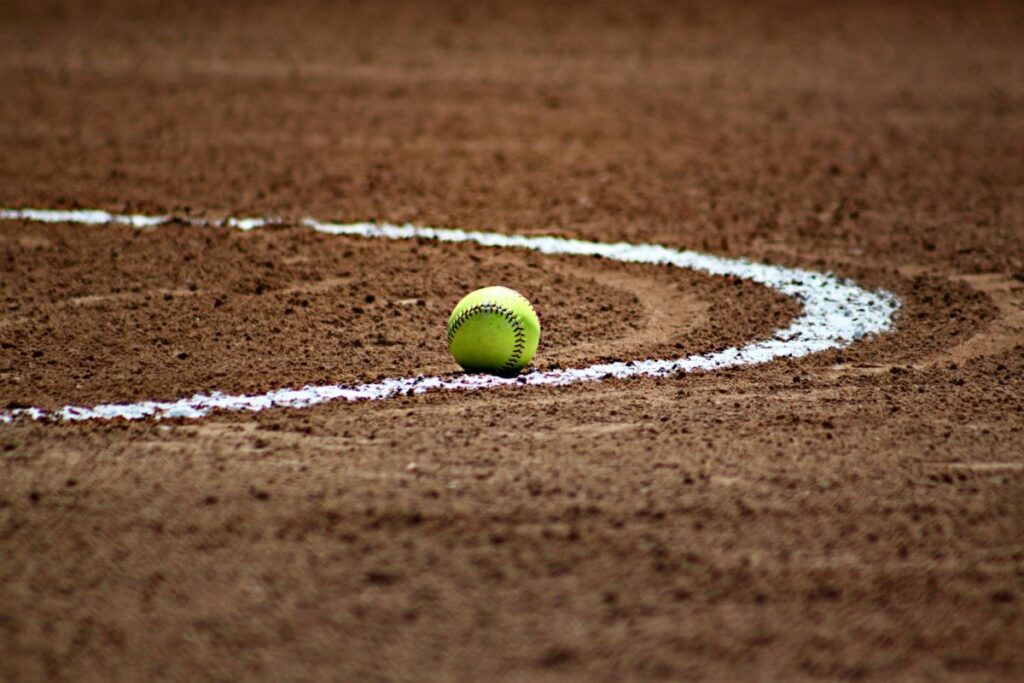While similar spheres used in bat-and-ball sports, baseballs and softballs have distinct qualities in materials, size, weight, manufacturing, cost, ideal conditions and more.
Here are 11 ways baseball balls differ from softballs:
- Size – Baseball 2.9 in diameter, softballs 3.8-5 in diameter.
- Weight – Baseball 5-5.25 oz, softballs 6-7 oz.
- Bounce – Baseballs have a low bounce, softballs deader.
- Materials – Baseball uses wool-wrapped cores, softballs composite/rubber cores.
- History – Baseballs from mid-1800s, softballs 1930s.
- Speed – Baseball pitch 90-105 mph, softball pitch under 85 mph.
- Spin – Baseballs minimize spin for distance, softballs spin less.
- Records – Fastest baseball pitch 105.1 mph, softball pitch 83 mph.
- Brands – Rawlings leads baseballs, Dudley tops softballs.
- Storage – Baseballs just get dingy, softballs retain properties longer.
- Cost – Pro baseballs $100+ per dozen, softballs $20+ each retail.
Below we’ll detail how baseballs and softballs differ in their specialized designs, materials, performance attributes, and regulations. Let’s play ball!

Size Difference
The main distinction is baseballs have a 2.9 inch diameter, while softballs are larger from 3.8-5 inches across, or up to almost double a baseball’s size.
The larger softball dimension contributes to easier contacts and swings. Baseball’s compact size challenges hand-eye coordination.
Weight Difference
Baseballs weigh from 5-5.25 oz by regulation standards. Softballs range between 6-7 oz, over an ounce heavier on average than a baseball’s mass.
The lighter baseball maximizes bat speed potential. The heavier softball carries more mass through the air when hit.
Materials Used
Baseballs consist of cork or rubber pill cores wrapped in wool or polyester yarn and finished with leather hides.
Softballs feature rubber, composite or cork center cores with leather or synthetic leather covers.
So baseballs optimize distance, while softballs prioritize visible covers that cushion bats.
Bounce Qualities
Baseballs have a low bounce to retain energy off the bat rather than wasting distance on the bounce.
Softballs undergo minimal bounce as well due to their dense cores and leather skins absorbing impact.
History of Both Ball Types
Early baseballs originated as improvised rubber or wood spheres in the mid-1800s before the cork and rubber pill cores developed.
Softballs evolved from indoor baseballs in the 1880s using softer rubber cores before larger softballs emerged in the 1930s.
So baseballs formalized first for organized competition, while softballs developed later for casual recreation.
Speed Difference
Well-thrown baseball pitches range from 90-105 mph at the elite pro levels.
Softball pitch speeds peak around 65-85 mph. The greater mass prevents higher velocities.
So baseballs achieve faster pitching speeds, but get less distance when hit.
World Records
- Fastest baseball pitch: 105.1 mph by Aroldis Chapman
- Fastest softball pitch: 83 mph by Eddie Feigner
The baseball speed records consistently outpace softball by over 20 mph.
Brand Popularity
For baseballs, Rawlings is by far the dominant manufacturer powering MLB and American pro play.
In softball, brands like Dudley and Worth lead manufacturing. But numerous companies offer quality softballs.
Each sport has recognized brand names synonymous with optimized ball performance.
Ideal Storage
Baseballs just get dingy and scuffed over years of play if protected from moisture, retaining ball integrity.
Softballs also slowly degrade but at a slower rate if shielded from abrasion and temperature extremes during storage.
Cost Considerations
Pro-grade baseballs cost over $100 per dozen and are precisely manufactured to strict standards.
High-end softballs run $20+ each but involve easier large-scale production with looser tolerances.
So softballs are more reasonably priced for casual recreation.
In summary, specialized sizes, weights, materials and constructions make baseballs and softballs ideally suited for their respective sports’ unique demands and hitting dynamics.
